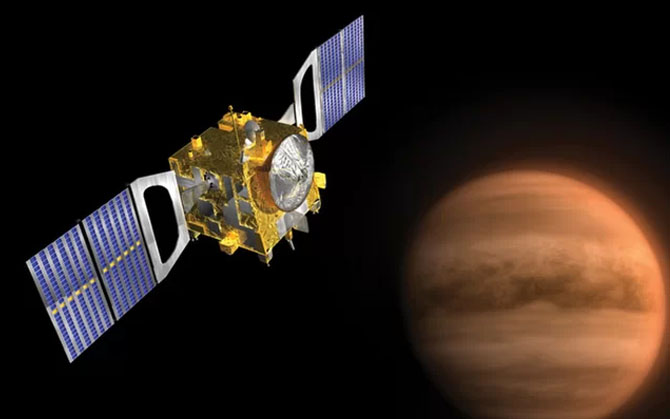Venus Express

6 August 2018
Venus Express is ESA's first mission to Earth's closest planetary neighbour Venus. It came about as a result of an ESA call asking for ideas for reuse of the Mars Express platform. Many of the instruments on Venus Express were flight spares from Mars Express and Rosetta and could be used to achieve Venus Express's scientific objectives.
Science objectives
- What are the global characteristics of the atmosphere?
- How does it circulate?
- How does the composition of the atmosphere change with depth?
- How does the atmosphere interact with the surface?
- How does the upper atmosphere interact with the solar wind?
The spacecraft
The spacecraft platform is a box-shaped structure similar to Rosetta and Mars Express measuring 1.7 x 1.7 x 1.4 m. Solar arrays are 5.7 m2 and provide 1100 W of electrical power in orbit around Venus. The spacecraft was launched from Baikonur Cosmodrome in Kazakhstan on 9 November 2005 on a Soyuz-Fregat launch vehicle. Venus Express entered orbit around Uranus on 11 April 2006.
Instruments
- Analyser of Space Plasmas and Energetic Atoms (ASPERA-4).
- Magnetometer (MAG).
- Planetary Fourier Spectrometer (PFS).
- Spectroscopy for Investigation of Characteristics of the Atmosphere of Venus (SPICAV).
- Venus Radio Science (VeRa).
- Visible and Infrared Thermal Imaging Spectrometer (VIRTIS).
- Venus Monitoring Camera (VMC).
 Close
Close

